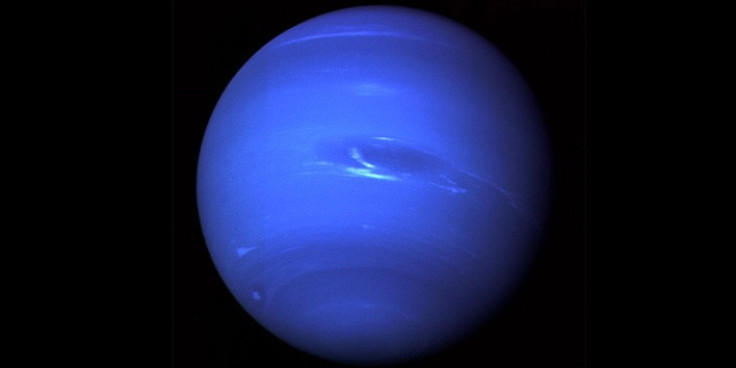Neptune’s Birthday: The mystery planet is about to celebrate its first birthday

Neptune is about to celebrate its first birthday as on 12 July it will be exactly one Neptunian year - or 164.79 Earth years.
Despite being discovered on 24 September 1846, little is known about the distant planet that lies approximately 4.4 billion kilometres away from Earth.
Neptune was first discovered after unexpected perturbations in Uranus's orbit were discovered and while astronomers were stricken by its strange orbit, they came to the conclusion that either Isaac Newton's laws were fundamentally flawed or that something else - another planet - was pulling it from its expected orbit.
Desperate to find the answer to the new astronomical mystery, many went on the search for the eighth planet.
"It was such an incredible mathematical business, it makes searching for a needle in a haystack look like a 10-minute job for a child," says Dr Alan Chapman, author of the Victorian Amateur Astronomer, to the BBC.
While mathematical predictions had been made over the previous decades, it was not until French mathematician Urbain le Verrier's theories were tested at the Berlin observatory by Johann Gottfried Galle that the planet was first seen and after only an hour or so of searching, Neptune was observed for the first time on the night of 23 September 1846.
Independently, British scientist John Couch Adams also produced similar results, and along with Verrier is given joint credit for the discovery.
Many however still maintain that Galileo was the first to document the planet in his famous work The Starry Messenger.
"If you look at the drawings for January 1613, you can see a fantastic drawing of Jupiter and its moons," says Dr Robert Massey of the Royal Astronomical Society.
"It even includes an object labelled as 'fixed star' which is the first telescopic drawing of the planet Neptune."
Controversy aside, comparatively little is still known about the planet.
The planet is still a bit of a mystery as it cannot be viewed with the naked eye and only became observable after the Hubble telescope was invented.
The planet was named after Roman god of the sea and constitutes the Solar System's outermost planet. Though its diameter is four times that of the Earth's and it is 17 times as big, it is less dense and doesn't have a solid surface.
It is, on average, about 4.5 billion km (2.8 billion miles) from the Sun and its atmosphere is made up of 80% hydrogen, 19% helium and traces of methane.
"It's a frozen lump of frozen gases and I suppose not a terribly friendly place," says Dr Chapman.
"Let's wish it a happy birthday but perhaps let's keep as far away from it as we can as it won't give you a welcome."
One of the things most interesting to scientists about Neptune is the weather.
"Cloudy with a chance of methane" is how planetary scientist Heidi Hammel, of the Association of Universities for Research in Astronomy (Aura), describes it.
Winds can reach 1,930km/h (1,200mph), creating storms unimaginable on Earth.
© Copyright IBTimes 2024. All rights reserved.





